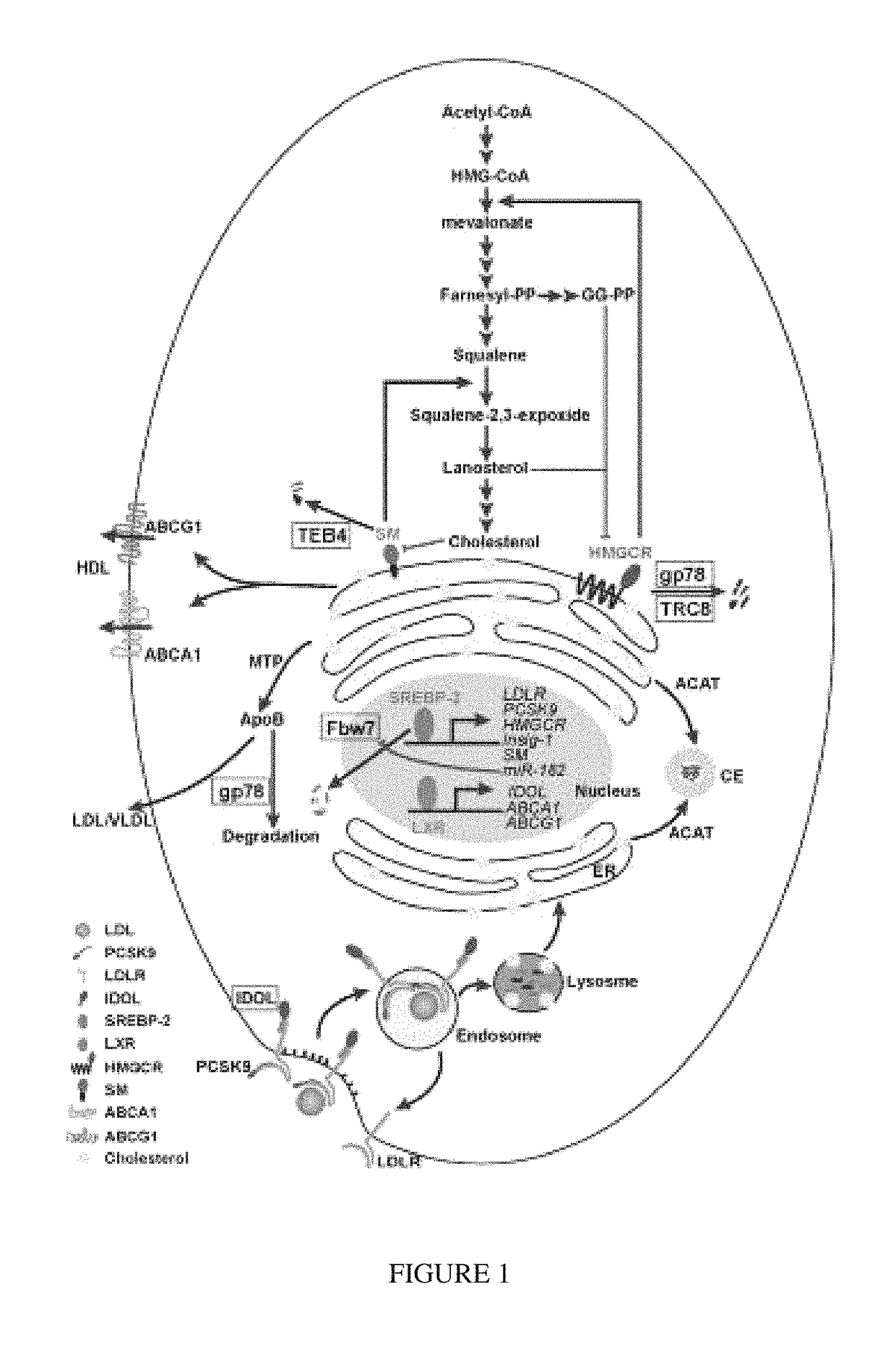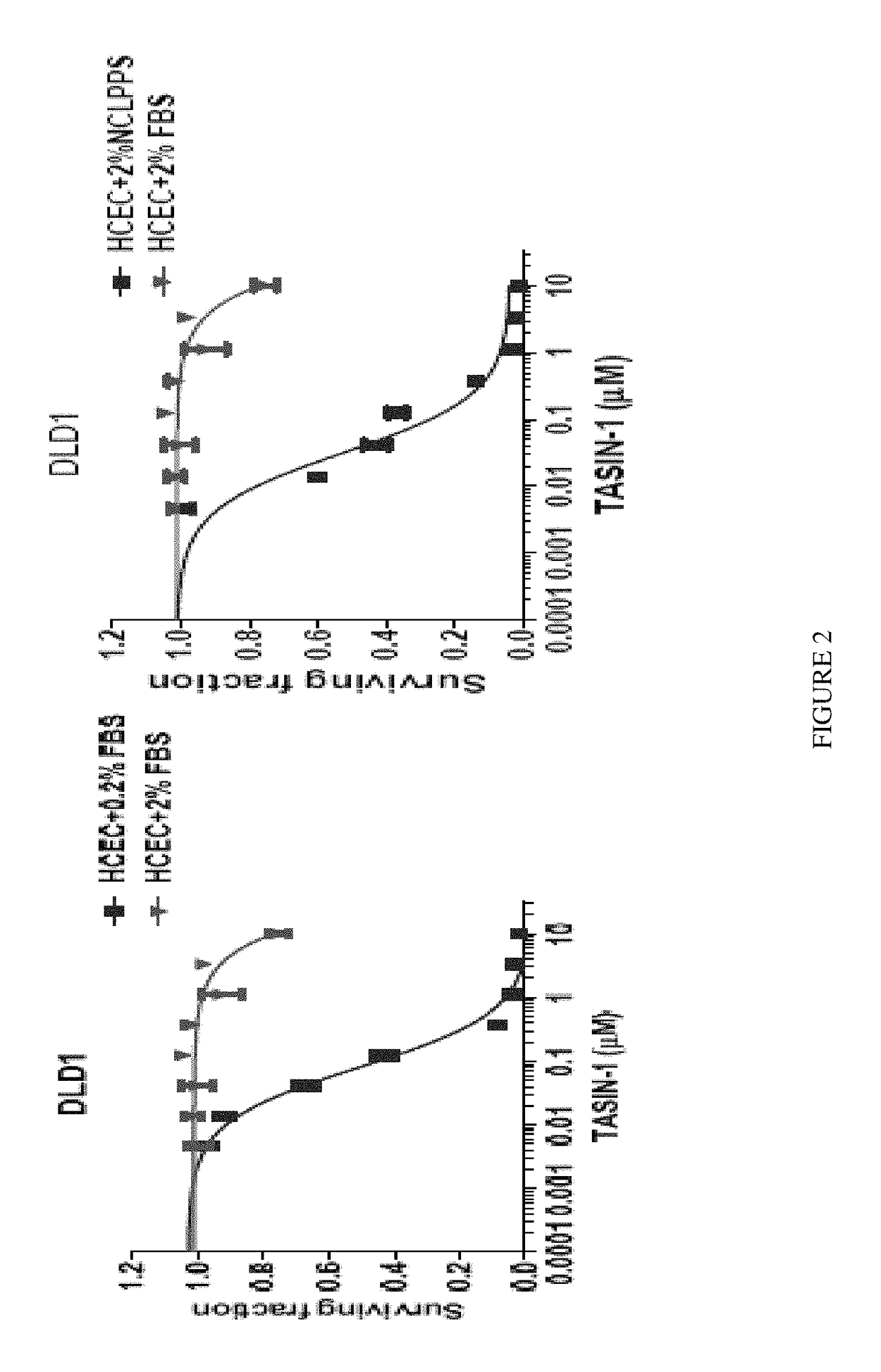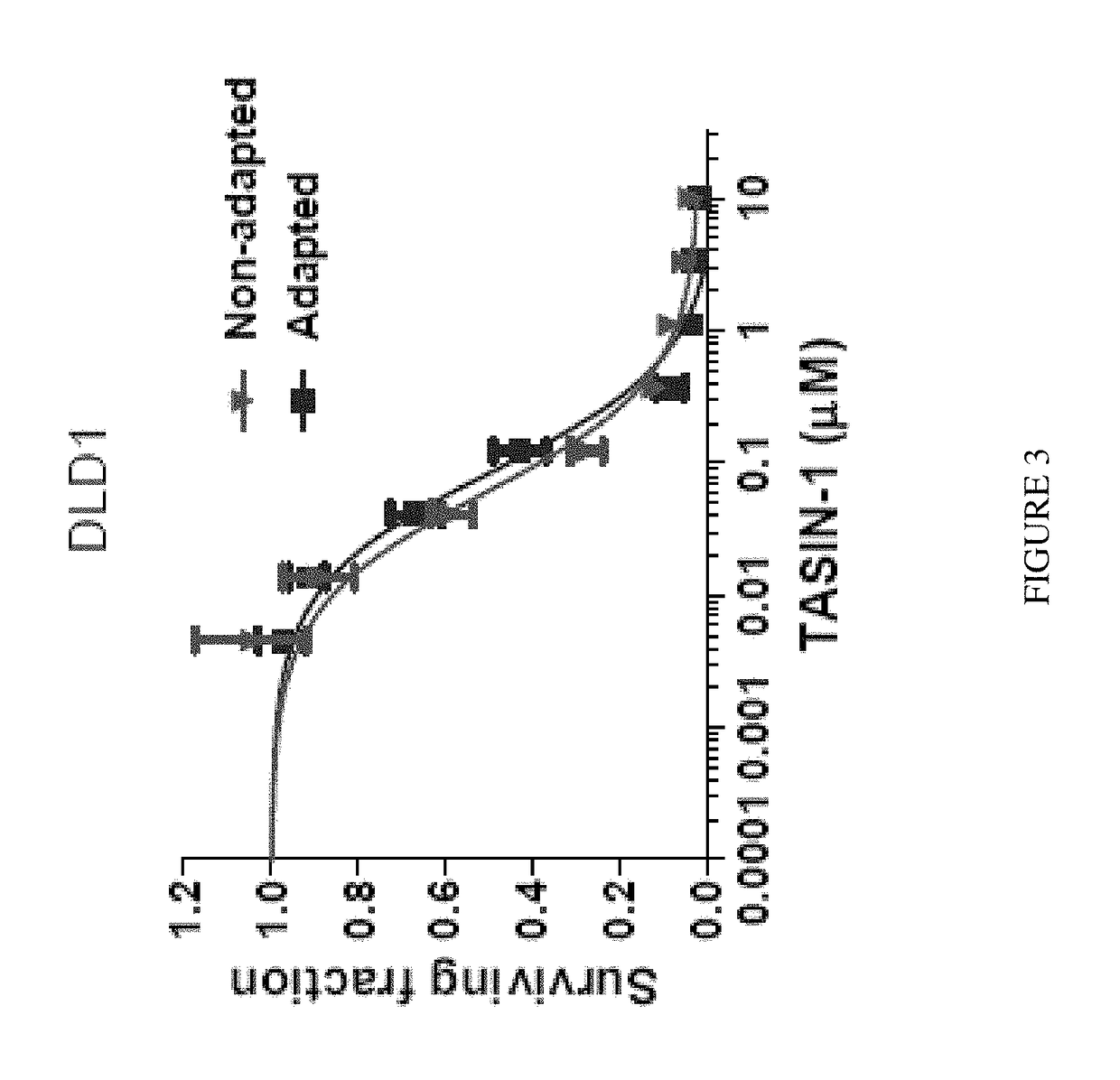Targeting emopamil binding protein (EBP) with small molecules that induce an abnormal feedback response by lowering endogenous cholesterol biosynthesis
a technology of emopamil and ebp, which is applied in the direction of heterocyclic compound active ingredients, instruments, organic chemistry, etc., can solve the problems of limiting the production of cholesterol, liver steatosis and hypertriglyceridemia, and significant disruption of estrogen receptor positive breast cancer cell proliferation
- Summary
- Abstract
- Description
- Claims
- Application Information
AI Technical Summary
Benefits of technology
Problems solved by technology
Method used
Image
Examples
example 1
Identification of Small Molecules that Target Truncated APC Proteins
[0468]Mutations in the human APC tumor suppressor gene are linked to Familial Adenomatous Polyposis (FAP), an inherited cancer-prone condition in which numerous polyps are formed in the epithelium of the large intestine (See Kinzler et al., Science, 1991; 253:661-665; Kinzler and Vogelstein, Cell, 1996; 87:159-170; Half et al., Orphanet Journal of Rare Diseases, 2009; 4:22). The development of colorectal cancer (CRC) is initiated by the aberrant outgrowth of adenomatous polyps from the colonic epithelium that ultimately evolve into aggressive carcinomas (See Kinzler and Vogelstein, Cell, 1996; 87: 159-170). About 85% of sporadic colorectal cancers have been reported to harbor APC truncating mutations (See Kinzler and Vogelstein, Cell, 1996; 87:159-170). The growth of the polyps is associated in most cases with alterations of both alleles of the Adenomatous Polyposis Coli (APC) gene. A first mutational hit occurs rou...
example 2
TASIN-1 is Selectively Toxic to HCECs and CRC Cell Lines with APC Truncation when Tested in Physiological Levels of Serum
[0498]DLD-1 cells normally are cultured in 10% serum medium, and they are rapidly shifted to 0.2% serum medium for dose response studies. All experiments were performed in normoxic condition (21% O2).
[0499]FIG. 2 shows that TASIN-1 is active only in 0.2% serum or 2% lipoprotein deficient serum (LPPS) media conditions. DLD-1 cells have a truncated APC and are sensitive to TASIN-1 only in low (0.2%) serum (left panel). However, if one uses 2% lipoprotein deficient newborn calf lipoprotein-poor serum (NCLPPS) (right panel), the cells remain sensitive to TASIN.
[0500]As shown in FIG. 3, the sensitivity of DLD1 cells TASIN-1 was the same if the cells were not gradually adapted to low serum but instead the serum content was rapidly changed from 10% to low serum during drug testing. Adapted DLD1 cells were adapted to medium containing 0.2% serum by gradually decreasing se...
example 3
TASIN-1 Prevents Colon Cancer Progression Under High Fat Diet Conditions
[0502]Normal diet for CPC;Apc mice is 5.7% fat, while a high fat atherogenic diet is 12.8% fat (see Harlan, T. D. 120156 Hepatology 46: 1392 (2007)). CPC;Apc mice were fed a high fat diet for about 10 weeks; half the mice received TASIN-1 (dose), the other half did not (control). As shown in FIG. 5, left panel, body weight for the control group decreased over time, compared to the TASIN-1 group. As shown in FIG. 5, right panel top, colon cancer progression was accelerated by the high fat diet. As shown in FIG. 5, right panel, bottom, TASIN-1 reduced polyp formation and size, even in mice fed a high fat diet.
PUM
| Property | Measurement | Unit |
|---|---|---|
| diameter | aaaaa | aaaaa |
| particle size | aaaaa | aaaaa |
| size | aaaaa | aaaaa |
Abstract
Description
Claims
Application Information
 Login to View More
Login to View More - R&D
- Intellectual Property
- Life Sciences
- Materials
- Tech Scout
- Unparalleled Data Quality
- Higher Quality Content
- 60% Fewer Hallucinations
Browse by: Latest US Patents, China's latest patents, Technical Efficacy Thesaurus, Application Domain, Technology Topic, Popular Technical Reports.
© 2025 PatSnap. All rights reserved.Legal|Privacy policy|Modern Slavery Act Transparency Statement|Sitemap|About US| Contact US: help@patsnap.com



